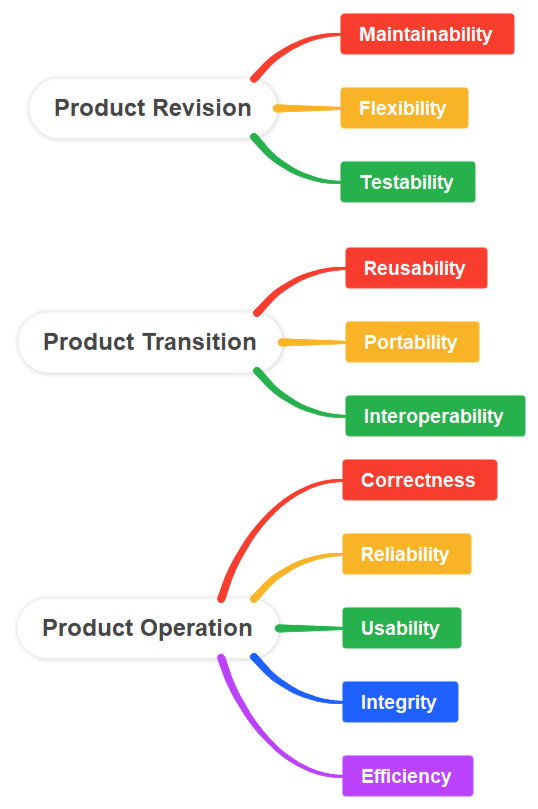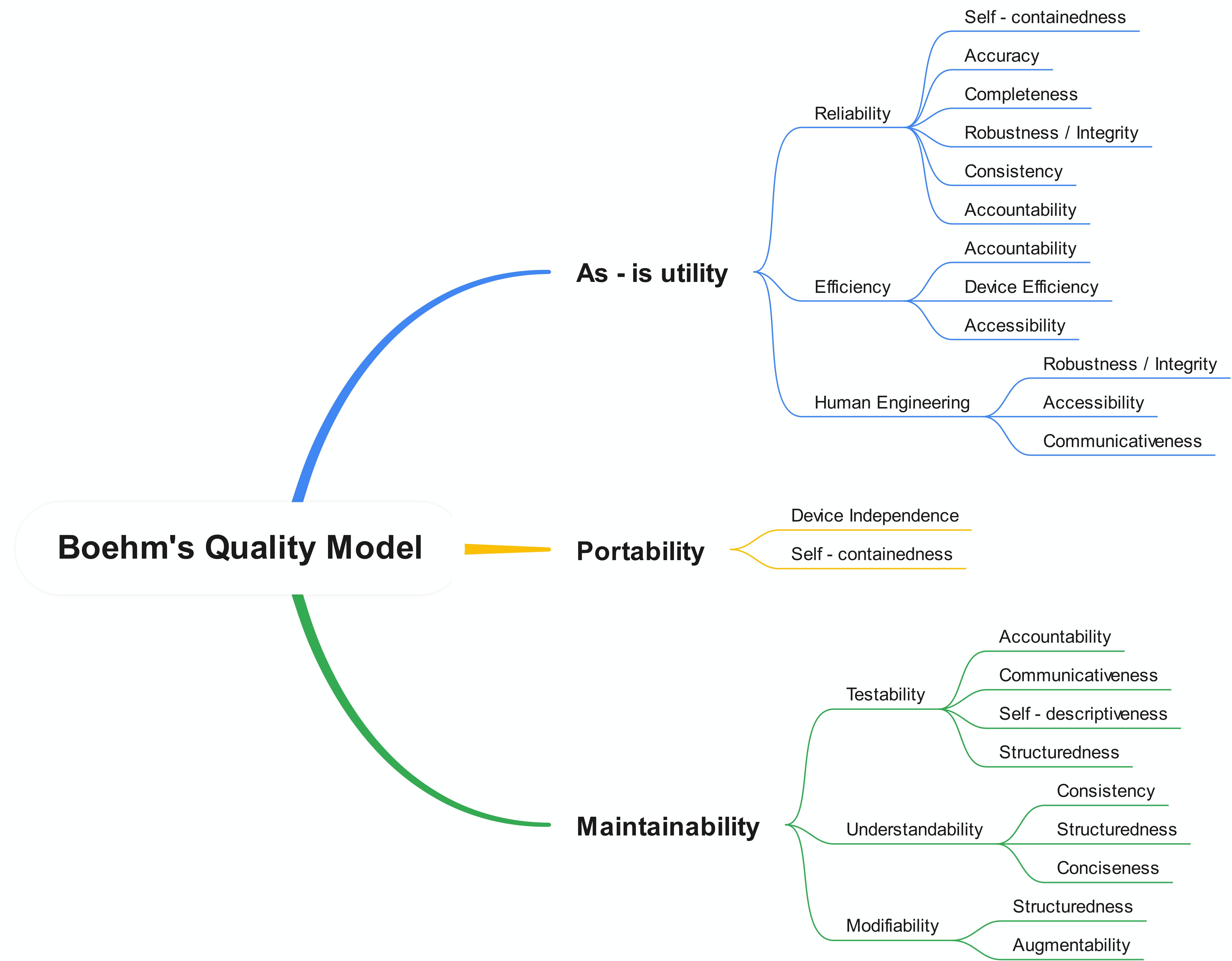Definition & What is Software Quality: One of the key aspects of software development is Software quality because it checks whether the developed product is good and reliable. After using the developed product, it confirms a few other things, like how successful the project is, how the system works, and how the users respond.
To get a high-quality final product, we must follow certain standards like functionality, reliability, security, and usability. Following these standards helps us decrease the bug count and also helps maintain the application with less cost.
What is the Software Quality Definition?
Quality refers to how good something is compared to other similar things. You can say it’s a degree of excellence. But when used to describe software, it refers to a defect-free product that is delivered on time, within the budget, meets the requirements or expectations, and should be maintainable.
What is Software Quality?
As per Wikipedia, software quality means
In software engineering, software quality measures how well software is designed (quality of design) and how well the software conforms to that design (quality of conformance). It is often described as a piece of software’s ‘fitness for purpose’.
and as per the ISO 8402-1986 standard, quality is defined as
the totality of features and characteristics of a product or service that bears its ability to satisfy stated or implied needs.
The quality of software can be defined by verifying the ability of the software against the user’s requirements. A software product must satisfy all the functionalities mentioned in the software requirement specification (SRS) document.
Sometimes, we do not consider a software product a quality product, although it satisfies all the requirements mentioned in the SRS document. For example, consider a software product whose every functionality works as per the requirement, but the user interface of the software product is unusable. Even though it works as expected, we cannot say this is a quality product.
We can calculate the Software quality based on the number of variables. Those variables can be divided into external & internal quality criteria. External quality represents the user experiences while running the software application, whereas internal quality refers to code-dependent and not visible to the end-user.
Software Quality is the confirmation that the software is meeting its requirements. We can check whether the software meets the quality standards by using validation and verification.
In validation, we mainly check whether the process used in software development is correct. But in Verification, we check whether the product meets the specifications.
Attributes of Software Quality
Some key aspects are there which country the software quality of the product, that is:
Good Design: As we know, the good looks & style of the application can attract customers. The application must have a good design, be user-friendly, and meet all the customer’s requirements. A few everyday things consider the right color for the application, font size, and styling of the web elements.
Good functionality: With Good looks of the application, the functionality of the application should work as expected. There should not be any deviation between the actual result and the expected result.
Reliable (acceptable level of breakdowns or failure): After completing the Good looks and Good functionality, we must test the application’s reliability. For example, there is a system that can store employee details, and it should not fail after a certain number of employee entries. This is called reliability.
Consistency: As we know, an application can run on multiple platforms, so it’s more important that your application behaves the same way on all platforms. And that is called Consistency.
Durable (lasts as long as it should): The developed application should run for a long time without failing; that is called durable. For example- by using a web application, you can insert 100 employees’ details. Still, after 100 employees, if you have entered more employee details, it should continue without any functional breaks of the application.
Good Service: The first thing that comes into the picture is Service after releasing or shipping the product to the owner. So it’s very important to provide the best service to satisfy the customer.
Scalability: How easy is it to extend a feature? Or to add a new one? Or to add extra cores or increase the size of the application’s cluster? Again, this is all about software architecture and anticipating future needs.
we have discussed several aspects of Software Quality like reliability, testability, code maintainability, and delivery rate. Testing is the basic way to measure all aspects of software quality, regardless of how quickly software must be released. The pressure to release software on time calls for adopting more software test automation, especially for GUI testing, which can be arduous.
However, Testing is not enough to check and improve software quality. It’s also important to use high-quality test metrics when evaluating the software. Test metrics measure the quality of any software testing effort. Without the right test metrics, errors are more likely to infiltrate production.
High-quality software results from comprehensively testing the main drivers of software quality and using test metrics to ensure effective testing efforts.
We have discussed how we can get a quality software product, and for getting a quality product, we have to follow the above aspects.
What is the software quality model?
Following the book are the essential aspects of quality software products. But sometimes, we need to analyze, or do you want to measure software quality? So, to measure software quality, we must follow some software quality models.
three software quality models are accessible and acceptable when it comes to measuring software quality:
Mccall’s model
Air Force introduced this model to measure software quality in 1977. The main aim of this model is to fill the gap between users and developers by focusing on the number of software quality factors that indicate the view of both users and developers.
McCall’s quality model classifies all the software requirements into 11 quality factors. Again, those 11 factors are grouped into three different categories: product operation, product division, and product transition factors:
- Product operation factors − Correctness, Reliability, Efficiency, Integrity, Usability.
- Product revision factors − Maintainability, Flexibility, Testability.
- Product transition factors − Portability, Reusability, Interoperability.

Boehm Quality Model
This software quality model was introduced in the year 1978. this is what type of hierarchical model high-level characteristics. This model measures a software product’s quality based on specific characteristics. based on software requirements, this model defined three primary uses, and those primary users are:
- As-is utility is the extent to which the as-is software can be used (i.e., ease of use, reliability, and efficiency).
- Maintainability, ease of identifying what needs to be changed, and ease of modification and retesting.
- Portability ease of changing software to accommodate a new environment.
Again, these three primary uses had associated quality factors; 7 quality factors are the next level of Boehm’s hierarchical model.
- Portability is the extent to which the software will work under different computer configurations (i.e., operating systems, databases, etc.).
- Reliability is the extent to which the software performs as required, i.e., the absence of defects.
- Efficiency and optimum use of system resources during correct execution.
- Usability, ease of use.
- Testability, ease of validation, that the software meets the requirements.
- Understandability is the extent to which the software is easily comprehended concerning purpose and structure.
- Flexibility is the ease of changing the software to meet revised requirements.

Dromey’s quality model
Dromey’s model mainly focuses on the attributes and sub-attributes to connect the properties of the software to the quality attributes.
There are three principal elements to this model
- Product properties that affect the quality
- High-level quality attributes
- Linking the properties with quality attributes

Conclusions:
The exploration of software quality presented in this discussion underscores its important role in determining the success and reliability of software products. Understanding the multifaceted aspects of quality, from design and functionality to reliability and scalability, is crucial for developers, testers, and stakeholders.
If you have any questions or desire further clarification on any aspect of software quality, I encourage you to engage in the conversation. Feel free to leave your questions or thoughts in the comment section below. Your inquiries will contribute to a deeper understanding of the topic and foster a collaborative environment where knowledge can be shared and refined. Let’s continue the dialogue and strive for excellence in software quality.
